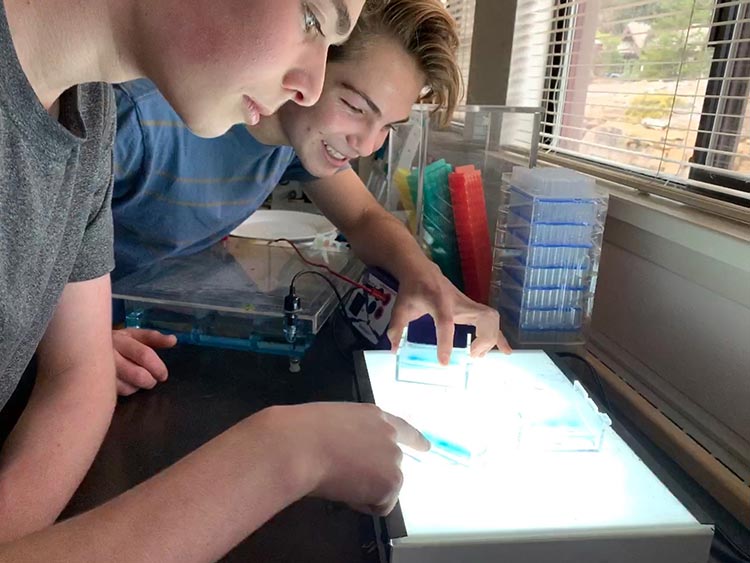By Leigh Ann Clifton
Freshmen students at Mount Madonna School have spent some time learning about forensic genetics and the structure of DNA. A recent project engaged the students as “detectives” collaborating in small groups to solve a “crime.”

Mt. Madonna School freshmen learn about forensic genetics using DNA fragments to solve a fictitious crime.
Their “case” began with one vial of DNA collected from the crime scene and five suspects. The students had previously learned that enzymes can be used to cut DNA molecules into fragments that vary for different people. Making the fragments visible and sorted by size creates a “fingerprint,” or a pattern that is specific for individuals.
“It was hard to wrap my head around what was happening with the DNA in the lab,” said student Sam Kaplan. “Although it was a hands-on activity, you can’t see DNA, and that makes it hard to understand. Each step we did with our hands had a result on a molecular level that was nearly undetectable to the naked eye.”
Next students ran the samples through an electrophoresis chamber on agarose gel (a high-grade seaweed agar, used in cooking). This process caused the negatively-charged DNA fragments to move across the gel at various rates. At the end, the students compare the bands created on the gel to each other to determine the perpetrator of the crime.
Kaplan said the activity gave students a new perspective on the topic.
“The job of a textbook is to cover all the material you are required to learn in a relatively concise way,” observed Kaplan. “However, these projects allow you to delve into a topic and ask questions about it, they allow you to study the same topic in great detail, but with a different perception.”